The Gift of South Dakota
Subscriptions to South Dakota Magazine make great gifts!
Subscribe today — 1 year (6 issues) is just $29!
Pearls on the Prairie
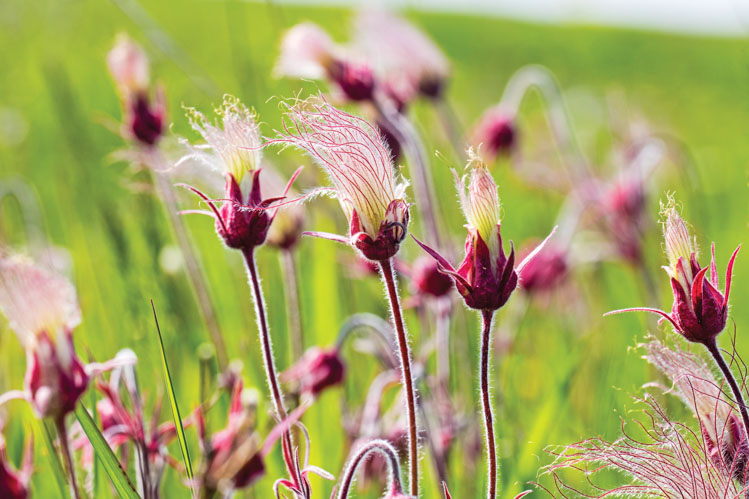 |
| Prairie Smoke at Jacobson Fen in Deuel County. |
Christian Begeman was driving the backroads of Deuel County near the Crystal Springs Rodeo grounds when he stumbled upon Jacobsen Fen Preserve, 160 acres managed by the Nature Conservancy that includes 10 calcareous fens. Unique wetlands such as these, which often support plants that cannot be found anywhere else in South Dakota, are sprinkled primarily throughout the Glacial Lakes on the eastern slope of the Prairie Coteau. They can be part of large complexes like Jacobsen Fen or the nearby 7-Mile Fen (also managed by the Nature Conservancy), or small enough that a farmer may walk past for years and not realize the treasures blossoming on his land.
“It’s not something you’re going to see from 100 yards away. You usually have to be standing on it to be able to see these plants,” says Dave Ode, a retired Game, Fish and Parks Department botanist. “The prairie is a place where you have to look closely, because there’s more there than might meet the eye.”
Fens are distinguishable from other wetlands because they contain large amounts of peat. Fed by underground springs, the cold, oxygen-poor water preserves organic material — usually grasses, sedges, rushes and root material — and creates spongy peat deposits. Those saturated pools of peat sit atop a cone made from a material called tufa, a hard, calcium-rich layer that forms over years of groundwater discharge. “Often times you’ll have a floating mat of vegetation that you can walk on,” Ode says. “It’s like a waterbed.”
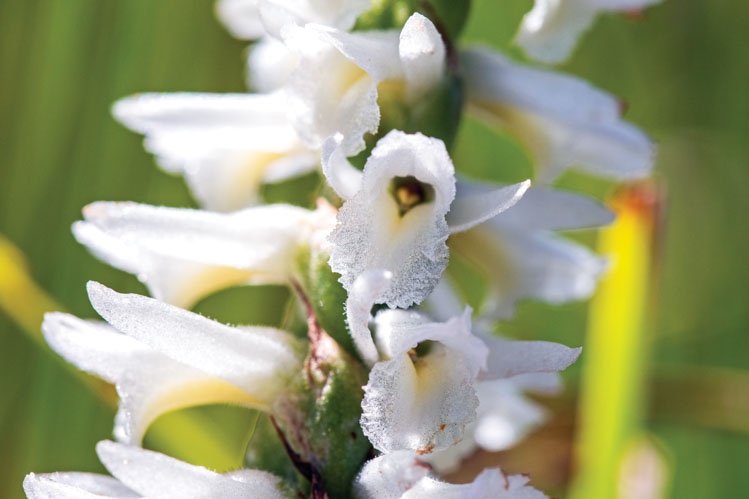 |
| Great Plains Ladies' Tresses, 7-Mile Fen, Deuel County. |
Thanks to the work of glaciers thousands of years ago, the Prairie Coteau is the perfect environment for fens and their rare plant and animal life. De Alton Saunders, a botany professor at the State Agricultural College in Brookings, was among the first scientists to document the flora in what he called “cold spring bogs” in the summers of 1896 and 1897. Among the plants he recorded were Northern stitchwort, slender cotton grass, necklace sedge and the small fringed gentian, a biennial that produces tiny blue flowers in late August and September.
The fringed gentian wasn’t documented again for another 80 years, when Ode and his colleagues began to revisit the fens in search of those rare plants. A Natural Areas Registry was created, and in 1985 the first site to be included was Hamann’s Fen, about 900 square feet in the middle of Alvin Hamann’s pasture west of Clear Lake. “He was just fascinated by the plants that occurred on that fen,” Ode said of Hamann, who died at age 102 in 2019. “He’d lived on that land all of his life. He’d ridden by it and driven above it, but never stopped to look at the plants on that little particular spot.”
Today there are around 30 documented fens in South Dakota, although Joe Blastick, Prairie Coteau Land Steward with the Nature Conservancy, believes there are surely others on private land that have not yet been discovered. “These are among the most rare and fragile wetlands we have in the world, and we still don’t know where all of them are,” Blastick says. “It’s really challenging because generally landowners know they have something special, they just don’t know it’s a fen because they’ve never really learned about them.”
While South Dakota’s fens are predominantly in the northeast, there are two notable sites in other parts of the state. The Minnechaduza Fen straddles the South Dakota/Nebraska border where the Nebraska Sandhills creep onto the Rosebud Reservation along Minnechaduza Creek, a tributary of the Niobrara River. In the 1960s, scientists attempted to date the fen by taking core samples through nearly 4 meters of accumulated peat. The preserved seeds, pollen and other organic matter that they recovered were more than 12,000 years old. “That fen predates the return of the grasslands to the Great Plains,” Ode says. “Western South Dakota had all of these patches of boreal forest. They found spruce cones, aspen seeds and pollen, and lots of rushes from the tail end of the glaciers in the bottom zone of this peat.”
Another interesting place is McIntosh Fen in the Castle Creek Valley northwest of Deerfield in the Black Hills. Its namesake, Arthur McIntosh, was a professor at the South Dakota School of Mines and Technology in Rapid City and the first person to fully document the plants of the Black Hills. (Minor documentation had been done in the past, including by a botanist on Lt. Col. George Custer’s 1874 expedition to the Black Hills. His soldiers camped in Castle Creek Valley, and in one of William Illingworth’s iconic photos of the expedition, McIntosh Fen is visible in the background.)
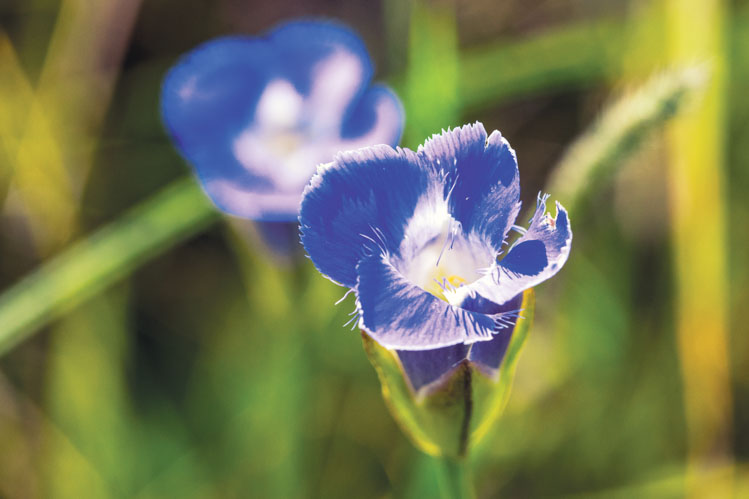 |
| Lesser Fringed Gentian, Roberts County. |
Among the plants that McIntosh discovered in 1924 were several species of willow that grow hardly anywhere else in South Dakota. Two decades later Sven Froiland, longtime biology professor at Augustana University in Sioux Falls and the namesake of its Froiland Science Complex, was studying willows of the Black Hills. He found McIntosh’s notes and attempted to relocate the fen. He followed the professor’s written directions exactly — 3 miles upstream from Deerfield — but never found McIntosh Fen.
In the 1980s, as Ode and others worked on their fen redocumentation, they encountered the same problem. Then Ode discovered that when the government dammed Castle Creek to create Deerfield Lake, the townsite was moved in 1946. “So you basically have to subtract the distance they moved Deerfield,” he says. “If you go half a mile upstream, voila, there’s McIntosh Fen, the same site he had described.”
Fens are magical places for botanists, nature lovers and photographers like Begeman, who was already enamored with the beauty of the northeast. “The rolling hills and unplowed pastures remind me of my childhood home in rural Dewey and Ziebach counties,” Begeman says. “This landscape is a haven for natural beauty tucked away amongst the hills. When I learned that there were small fens sprinkled throughout that offered even more diversity and rarities, the area became even more of a treasure.”
He’s returned for several summers to photograph the small white lady’s slipper, fiery orange wood lilies, threatened Monarch butterflies and regal fritillaries. “The elegant blue of the lesser fringed gentian and delicate white petals of the grass of parnassus are tiny, but gorgeous late summer residents of our calcareous fens. For a photographer with a macro lens, this kind of delicate beauty is worth getting my feet and knees wet,” he says. “In a world where true wilderness and unique beauty in natural habitat is hard to find, it’s great to know that areas of nearly untouched prairie and wetland abundance still exist.”
You can find them, too — if you know where to look.
Editor’s Note: This story is revised from the July/August 2021 issue of South Dakota Magazine. To order a copy or to subscribe, call (800) 456-5117.


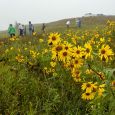
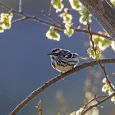

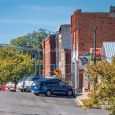
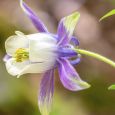
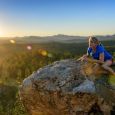


Comments